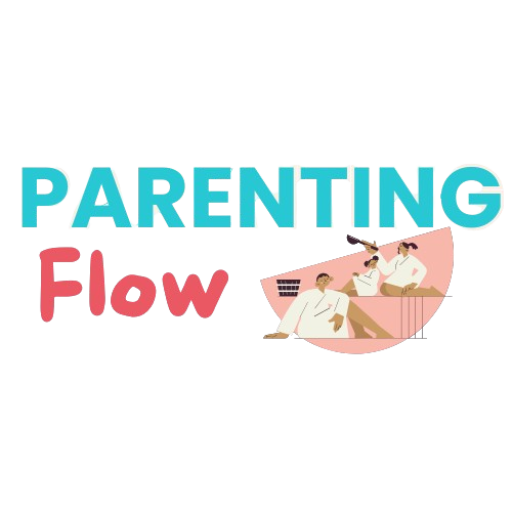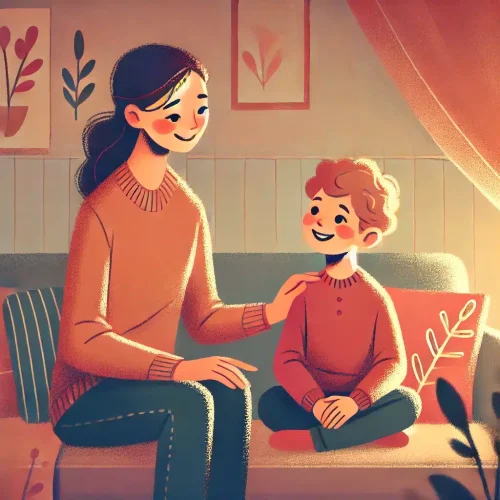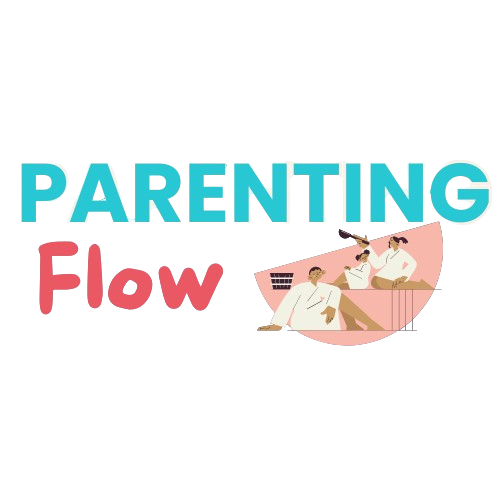Have you ever found yourself in the middle of a full-blown toddler tantrum at the grocery store, wondering where you went wrong? Or maybe you’re exhausted from saying « no » a thousand times a day with seemingly no impact? I’ve been there too overwhelmed, frustrated, and searching for a better way.
That’s when I discovered the Love and Logic approach, and honestly, it changed everything about how I parent. This isn’t just another parenting theory it’s a practical philosophy that builds stronger relationships while raising kids who can think for themselves and make responsible choices.
Whether you’re at your wit’s end or just looking to fine-tune your parenting approach, these nine transformative Love and Logic principles might be exactly what your family needs. They’ve certainly transformed mine.
What Is Love and Logic Parenting?
Love and Logic is a research-based parenting philosophy founded by Jim Fay and Foster W. Cline that emphasizes raising responsible children through loving relationships, genuine empathy, and logical consequences rather than anger, threats, or punishment.
At its core, this approach balances setting firm limits with showing true compassion, allowing children to make what the founders call « affordable mistakes » and learn from natural consequences in a supportive environment.
« The Love and Logic approach changed how I connect with my kids. Instead of constant power struggles, we now have conversations and growth opportunities. » – Sarah, mother of three
To learn more about the Love and Logic® approach and explore resources directly from the creators, visit the official website:
👉 Love and Logic Official Website
9 Transformative Love and Logic Principles Every Parent Should Know
1. Model the Behavior You Want to See
Kids are watching us always. When I realized my 4-year-old daughter was mimicking my frustrated tone when playing with her dolls, it hit me: she was learning directly from my example, not my lectures.
Love and Logic emphasizes that children learn most powerfully through observation. If we want respectful, responsible kids, we need to demonstrate these qualities ourselves.
How to apply this principle:
- Handle your own mistakes with grace admit them, fix them, and move on
- Speak to your spouse and others with the same respect you expect from your children
- Manage your emotions in challenging moments (even if it means taking a timeout yourself)
- Show responsibility by fulfilling your commitments and obligations
When children see us living the values we preach, they internalize them far more effectively than through any lecture we could give.
2. Replace Control with Guidance
Traditional parenting often focuses on controlling children’s behavior through rewards and punishments. Love and Logic flips this approach upside down by trading control for guidance.
I used to micromanage my son’s homework routine, resulting in nightly battles. When I shifted to offering choices within boundaries (« Would you like to do homework before or after dinner? »), his resistance melted away, and his sense of ownership skyrocketed.
Ways to guide rather than control:
- Provide limited, acceptable choices: « Would you like to wear the red shirt or the blue one? » rather than « What do you want to wear today? »
- Ask questions instead of giving commands: « What’s your plan for getting ready for bed? » instead of « Brush your teeth right now! »
- Allow affordable failures in safe situations
By guiding instead of controlling, we help children develop decision-making skills and internal motivation rather than dependence on external rewards or fear of punishment.
3. Embrace the Power of Empathy Before Consequences
Perhaps the most distinctive element of Love and Logic is the emphasis on showing genuine empathy before delivering consequences. This simple shift dramatically changes how children experience discipline.
When my daughter broke our neighbor’s window with a baseball, my first instinct was to lecture. Instead, I took a deep breath and said, « Oh, how sad. This is going to be expensive to fix. » That genuine empathy allowed her to feel safe enough to take responsibility instead of becoming defensive.
Empathy statements sound like:
- « This is so sad… »
- « I bet that feels really disappointing… »
- « I can see you’re upset about this… »
Showing empathy doesn’t mean you approve of the behavior—it communicates that you care about your child’s feelings even when they’ve made a mistake. This maintains your relationship while the natural or logical consequence does the teaching.
4. Allow Affordable Mistakes Early and Often
Love and Logic parents understand that children learn best from experience—including failures and mistakes—when the stakes are relatively low.
I watched my friend’s 10-year-old son learn this lesson when he forgot his lunch at home. Rather than rushing to school with the forgotten meal, his mom allowed him to experience mild hunger that day. The next morning, guess what was the first thing he grabbed before leaving the house?
Examples of affordable mistakes:
- Forgetting homework (and experiencing the teacher’s response)
- Not wearing a coat in chilly weather
- Spending allowance too quickly and having nothing left for a desired item
The key is allowing these learning opportunities when the consequences are uncomfortable but not dangerous or traumatic. These small lessons build wisdom that lasts a lifetime.
5. Set Enforceable Limits with Clarity and Calm
Traditional discipline often relies on unenforceable statements like « Be respectful! » or « Stop fighting with your sister! » Love and Logic parents, however, focus on clear, enforceable limits they can control.
Examples of unenforceable vs. enforceable statements:
| Unenforceable | Enforceable |
|---|---|
| « Be nice to your brother! » | « I’m happy to drive you to your friend’s house when I see you treating your brother kindly. » |
| « Clean your room now! » | « I’ll be available to take you to the movies after your room is clean. » |
| « Stop arguing with me! » | « I listen to kids who speak respectfully. » |
Enforceable limits state what you will do rather than making demands about what your child should do. This subtle shift eliminates power struggles while maintaining healthy boundaries.
6. Replace Anger with Problem-Solving
When children misbehave, our natural reaction might be frustration or anger. Love and Logic encourages parents to respond with calm curiosity instead, transforming discipline moments into problem-solving opportunities.
The Love and Logic problem-solving approach:
- Express empathy first: « That’s a tough situation. »
- Hand the problem back: « What do you think you might do to solve this? »
- Offer choices or ask questions: « Would it work better to apologize in person or write a note? »
- Allow consequences with empathy: « I know this is hard. You’ll figure it out for next time. »
By avoiding anger and encouraging problem-solving, we teach children that mistakes are opportunities for growth rather than reasons for shame.
7. Focus on Relationship-Building Daily
The « love » in Love and Logic isn’t just a nice word—it’s foundational. Strong, positive relationships with our children create the security they need to handle logical consequences without feeling rejected.
Simple ways to strengthen your parent-child bond:
- Spend at least 10 minutes of one-on-one time daily with each child
- Listen more than you speak during conversations
- Notice and comment on positive behaviors and attributes
- Share appropriate personal stories about your own childhood challenges
- Create regular family traditions and rituals
When children feel genuinely loved and connected, they’re more receptive to guidance and more motivated to meet expectations.
8. Use Logical Consequences Instead of Punishment
There’s a crucial difference between punishment and logical consequences. Punishment often feels arbitrary and disconnected from the behavior, while logical consequences naturally flow from the child’s choices.
When my son left his bike in the driveway despite reminders, I could have taken away screen time (punishment). Instead, I put the bike in « garage jail » for 24 hours (logical consequence). The connection between his action and the outcome was clear, and he never left his bike out again.
Examples of punishment vs. logical consequences:
| Punishment | Logical Consequence |
|---|---|
| Grounded for a week for breaking a window | Contributing to repair costs from allowance |
| No dessert for arguing with sibling | Taking a break from shared activities until able to play cooperatively |
| Early bedtime for not completing chores | Chores must be completed before screen time or play |
Logical consequences teach cause and effect in a way that punishment simply cannot.
9. Adjust Your Approach Based on Developmental Stages
Love and Logic recognizes that children’s needs and capabilities change dramatically as they grow. What works for your toddler won’t work for your teenager, and vice versa.
Love and Logic through developmental stages:
- Toddlers (1-3): Focus on simple choices, consistent routines, and brief logical consequences
- Preschoolers (3-5): Expand choices, use more « thinking words, » and implement immediate (not delayed) consequences
- Elementary age (6-12): Gradually increase responsibility, encourage problem-solving, and allow more significant affordable mistakes
- Teens (13+): Shift to consultant role, ask more questions, and allow increasingly important decisions with appropriate guidelines
By adapting our approach to our children’s developmental needs, we maintain effectiveness while respecting their growing capabilities.
How Love and Logic Differs from Traditional Parenting Styles
Understanding how Love and Logic compares to other approaches can help clarify what makes it unique.
| Parenting Style | Key Characteristics | Potential Outcomes |
|---|---|---|
| Authoritarian | High control, low warmth, strict rules with punishment | Obedient but potentially anxious children who struggle with independent thinking |
| Permissive | Low control, high warmth, few rules or consequences | Children who struggle with boundaries and self-discipline |
| Authoritative | Balanced control and warmth, clear expectations with support | Responsible, confident children with good decision-making skills |
| Love and Logic | Guided choices, natural consequences, empathy before discipline | Independent, resilient children who understand cause and effect |
Where traditional authoritarian parenting might say, « Because I said so, » and permissive parenting might avoid confrontation entirely, Love and Logic occupies the sweet spot of clear boundaries delivered with genuine care and respect.
FAQs About Parenting with Love and Logic
How does Love and Logic handle discipline without punishment?
Love and Logic uses logical consequences that relate directly to the child’s behavior, encouraging responsibility rather than punishment or power struggles. For example, if a child refuses to put toys away, those toys might be temporarily placed in « toy time-out » rather than punishing the child with no TV or an early bedtime. The focus stays on the natural connection between choices and outcomes.
Can Love and Logic be used with children of all ages?
Yes, the approach is designed for children from infancy through adolescence and even young adulthood, adapting strategies to developmental stages. While the specific techniques might change, the core principles of empathy, consequences, and problem-solving remain consistent throughout childhood and beyond.
What role does empathy play in Love and Logic parenting?
Empathy is crucial; parents respond calmly and compassionately to children’s mistakes, helping them feel valued while understanding consequences without anger or lectures. This « empathy first » approach maintains the parent-child relationship during discipline moments, making children more receptive to learning from their experiences.
What are some examples of logical consequences used in Love and Logic?
Examples include a child paying for a broken item they caused or losing privileges related to the misbehavior, always avoiding harsh or unrelated punishments. If a child dawdles in the morning, they might experience the natural consequence of walking into class late rather than the parent creating an artificial consequence like taking away electronics.
How can Love and Logic help with challenging behaviors like tantrums or defiance?
By staying calm, setting clear limits, and allowing children to experience natural consequences with empathy, parents reduce power struggles and promote cooperation. A tantruming child might be calmly removed from a public space with empathy (« This is so sad that we need to leave the store before we’re finished ») rather than engaging in threats or negotiations during the emotional moment.
Real-Life Success Stories with Love and Logic
I’m not the only parent who’s experienced transformation through Love and Logic principles. Here are a few success stories from other families:
« My daughter used to fight bedtime every single night. When I switched to giving her choices about her bedtime routine—which pajamas to wear, which two books to read—the battles disappeared almost overnight. She felt empowered by having a say in the process. » – Michael, father of a 4-year-old
« My teenage son was constantly ‘forgetting’ his responsibilities. Instead of nagging, I started saying ‘I provide rides for kids who have completed their chores.’ The first time he missed a ride to his friend’s house, he was upset—but I responded with empathy instead of lecture. He hasn’t ‘forgotten’ since. » – Jamie, mother of a 15-year-old
« We have three kids under seven, and mealtimes were chaos. Using Love and Logic, we established clear expectations and consequences—you eat what’s served or wait until the next meal, and you stay seated until excused. With consistency and empathy, our dinner table transformed from battlefield to family time. » – Carlos and Leah, parents of three
Love and Logic Resources for Parents Ready for Change
If you’re ready to dive deeper into Love and Logic principles, here are some excellent resources to support your journey:
- Parenting with Love and Logic by Foster Cline and Jim Fay – The foundational book that outlines the complete philosophy and approach.
- Love and Logic Magic for Early Childhood – Specifically designed for parents of younger children, with practical examples and strategies.
- Love and Logic Parenting Online Courses – Self-paced learning with videos, examples, and practice scenarios.
- Love and Logic Workshops – Many communities offer in-person or virtual workshops led by certified Love and Logic facilitators.
- Parenting with Love and Logic Podcast – Free audio resources with real-life applications and expert advice.

Implementing Love and Logic in Your Home: A Starting Guide
Ready to try Love and Logic with your family? Here’s a simple five-step plan to begin:
- Start small – Choose one challenging situation and apply Love and Logic principles rather than trying to change everything at once.
- Practice empathy statements – Before responding to misbehavior, pause and prepare an empathetic response.
- Identify enforceable statements – Make a list of common situations and create enforceable statements for each one.
- Plan for mistakes – Consider what affordable mistakes your child might make and determine how you’ll respond with empathy.
- Find support – Connect with other parents using Love and Logic through local groups or online communities.
Remember that consistency is key, but perfection isn’t required. Even implementing these principles part of the time can make a significant difference in your family dynamics.
The Lasting Impact of Love and Logic Parenting
As I reflect on my own parenting journey with Love and Logic, the most significant change hasn’t just been in my children’s behavior—it’s been in our relationship. By replacing control with guidance and punishment with natural consequences, we’ve built a family culture of respect, responsibility, and genuine connection.
My kids aren’t perfect (and neither am I!), but they’re learning to think through problems, take responsibility for their actions, and make increasingly wise choices. More importantly, they know they’re deeply loved even when they make mistakes.
Isn’t that what we all want for our children? The confidence to navigate life’s challenges and the security of unconditional love along the way? With Love and Logic, these goals become achievable for every family—including yours.
Ready to transform your parenting approach with Love and Logic principles? Which technique will you try first? I’d love to hear about your experiences in the comments below!







